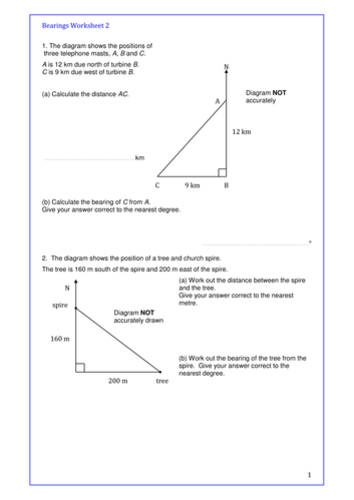










Bearings are on the new GCSE for both foundation and higher tier. I’ve produced worksheets to go with my PowerPoint introductions which you will find for free on TES.
The first worksheet covers simple measuring and drawing of bearings, and applying simple geometry.
The plenary quiz is great for rounding off the lesson, reviewing learning in a following lesson, or later revision. Two versions, one with immediate answers after each question, and one with answers following all the questions. Both PowerPoints also come as PDFs so will open on any system and look as they should.
The second worksheet moves on to trigonometry, covering distances in triangles using Pythagoras, and finding bearings using simple trig ratios in right angled triangles. The second half of the worksheet covers the higher aspect of trig - sine rule and cosine rule to find bearings and distances.
Answers also included for both worksheets.
The free introductions are found at: https://www.tes.com/teaching-resource/maths-gcse-bearings-doing-the-simple-geometry-for-foundation-11494933
and: https://www.tes.com/teaching-resource/maths-gcse-bearings-introduction-how-to-read-and-write-bearings-colourful-presentation-11491326
All images © Colin Billett, 2017
Something went wrong, please try again later.
Report this resourceto let us know if it violates our terms and conditions.
Our customer service team will review your report and will be in touch.